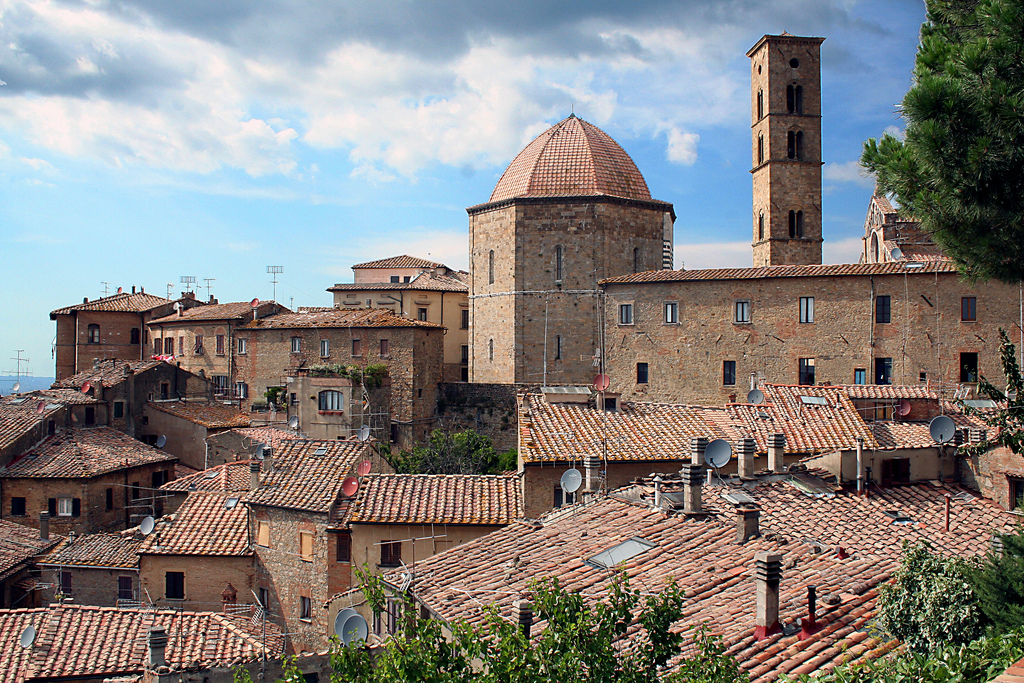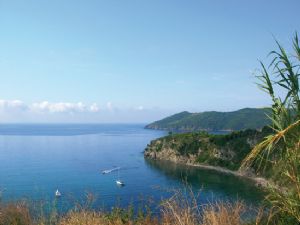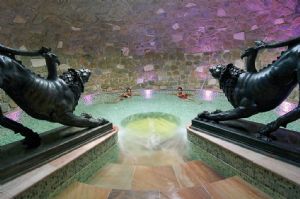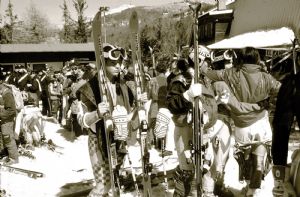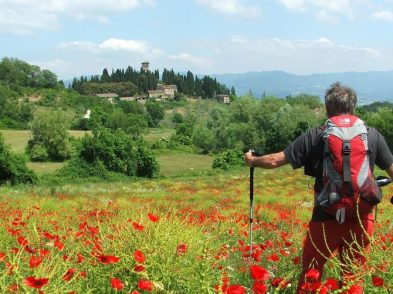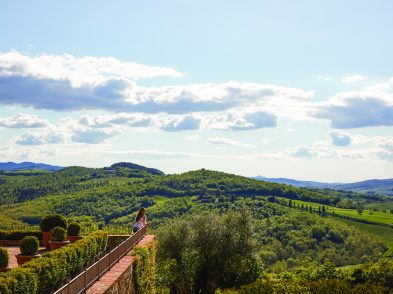People often ask me which towns in Tuscany they should visit, and whenever they do, I always recommend Volterra. It has a good thousand years on the medieval towns in the area, and there is so much to see that every time I visit I discover something new.
The approach to this magnificent town, rising starkly from a high hilltop at the summit of a sharply winding road, is stunning. The city centre is easy to navigate, parking is a breeze, and it is mercifully free of the throngs of tourists crowding the streets of neighboring San Gimignano.
It is no mystery why those ingenious, superstitious, metalworking Etruscans, who bridged the gap between the Greeks and the Romans, chose Volterra as their largest outpost back in 800 B.C. The town is strategically situated on the highest peak in a chain of hills loaded with iron, lead, tin, and alum, which used to treat fabrics and leather. Alabaster, which was carved by the Etruscans into sarcophagi, funeral urns and other decorative works of art, is quarried in the surrounding hills and sculpted in the area to this day. Salt, the only preservative during those times, was harvested from beds below the town. Surrounding springs also acted as a natural barrier to barbarian raids.
Volterra is about an hour and a half from Florence by car. It is best to park at Porta Docciola, a free, well-kept secret from tourists. From the parking lot, walk through the medieval arch and up the stone stairs to your right into piazza San Michele. The design of the small church of San Michele, like that of the cathedral, was influenced by trade with the Middle East coming through Pisa, just 60 kilometers to the east. Take note of Enoteca Scali, which has an impressive selection of wines (pick up a local vintage on your way out). Via Matteotti, the main shopping street and local evening passeggiata is to your left. I always start my visits with a cappuccino at L’Incontro, a favorite bar among the locals, serving homemade gelato in summer and handmade chocolates formed into little sarcophagi in winter.
At the end of via Matteotti, continue straight to Porta dell’Arco, an Etruscan gate now considered the most important historical site in Volterra. Double back and follow signs to the twelfth-century cathedral with its rather unremarkable façade and exquisite interior, containing a few important works of art by Luca Signorelli and Mino da Fiesole. I prefer the striking octagonal baptistery, which is finished on one side and situated directly across the cathedral. Back in piazza dei Priori, go to the local tourist office to pick up a map of the town highlighting key sights. Also in the piazza, the Alabaster Cooperative gives a nice overview of the range and talent of local sculptors.
I had little appreciation for alabaster sculpture until recently, when a friend took me to the studio of Giorgio Pecchioni, where the artist was at work, the floor and his body blanketed in inches of white powder. Giorgio represents a new generation of sculptors who are not only keeping the ancient art form alive, but pushing it to new extremes. His shop in piazza Minucci, across from the alabaster museum, features a life-sized alabaster electric guitar and a complete drum set.
Through the arch to the left and in sharp contrast to Pecchioni’s studio, the Rossi family has been sculpting classical alabaster works at Rossi Alabastri since 1912. Walking into this gallery is like entering a museum, its shelves lined with exquisitely carved urns, vases, bowls and other decorative pieces. In the studio to the right of the shop, you are likely to see a member of the Rossi family shaping a vase as it twirls on a machine.
Along the street leading from Rossi to the Teatro Romano, Fabula Etrusca is a purveyor of exquisite gold jewelry, which makes reproductions of Etruscan pieces that were once made by hand in Volterra. If your group is not too big, ask to go back into the studio to see how the intricate pieces are created.
Further down the street you can’t miss the Roman amphitheater and hot baths, dating back to the first century A.D. You can see the partially recreated site perfectly from this view-there’s no need to buy a ticket to get close. The theatre functioned as the town dump for centuries, until an archeologist discovered the ruins underneath it. Patients from the local insane asylum were later enlisted to dig out the trash.
The panoramic views stretch to the Tyrrenian Sea, and on a clear day you can see all the way to the Cinque Terre. The San Giusto Clemente church off to the left was built in the 1600s to honour two brothers, saints Giusto and Clemente. Legend has it that during a particularly savage barbarian raid, the brothers persuaded the Volterrans to throw bread over the walls to their enemies, fooling them into believing they had enough food to last for months. The disheartened barbarians retreated and the town was spared.
At the end of the road, glance left to the Porta Fiorentina, where the ancient road to Florence began. Then turn right and pass through piazza San Michele again until you reach via Gramsci. On this wide street you’ll find a delightfully aromatic coffee roaster that also sells a variety of teas. Further down on the left, a local weaver sits behind her loom, weaving wool, mohair and cashmere into brightly colored knitwear of all kinds (a great gift idea).
Eventually, you will reach the Guarnacci Museum, which houses the largest private collection of Etruscan artifacts in Italy. Bypass the funeral urns and sarcophagi and head to the vase collection to see the little lacromato, which were used to collect tears at funerals. Perhaps the most famous Etruscan artifact is the tall, dark, skinny Ombra della Sera (‘shadow of the evening’). My favorite section is the gold jewelry on the top floor. That these intricate necklaces, earrings, rings and fabula were handcrafted in such minutia without the aid of magnifying glasses is astonishing.
If you’d like to go for a nice afternoon stroll with great views, the gardens in the Archeological Park are lovely, and you can see what little remains of some Etruscan foundations. Above is the massive Fortezza Medicea, an operating prison since the 1400s, where many mafiosi have done time behind bars.
For the best lunch in Volterra, jump back in the car and head straight to Trattora da Badò, across from the COOP (turn onto the street between the restaurant and the COOP; there are plenty of parking spaces ahead). Be sure to ask for the cipolle fritte, sweet, red onions fried in a crispy tempura batter, which are not normally on the simple, seasonal menu. I recommend the grilled porcini mushrooms delicately flavored with olive oil, sea salt and parsley, if they are available. The fried baccalà (often the only fish you will see on a menu in Tuscany) in a hearty tomato sauce is surprisingly flaky and tender. The tortelloni with ricotta and spinach in a veined pecorino sauce is heavenly, and the grilled meats are cooked to perfection.
Getting there
The easiest and fastest way to reach Volterra is by car. From Florence take the Firenze-Siena highway towards Siena about 40 kilometers to the Colle Val d’Elsa exit and follow the signs to Volterra another 20 kilometers or so west. As you wind your way up the hill into the town, pass under an arch and look for the COOP grocery market on your right. Take the next right where you’ll find a sign for the P. Docciola parking lot. Follow the tree-lined street along a stone wall on your left, bearing left at the first intersection. The large dirt parking lot will be on your right.
If you’re the more adventurous kind, take the bus. Find bus schedules (in Italian)

